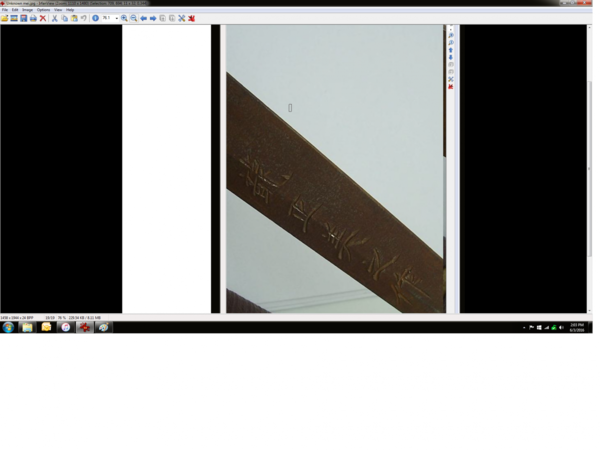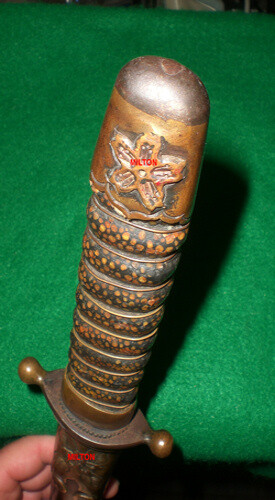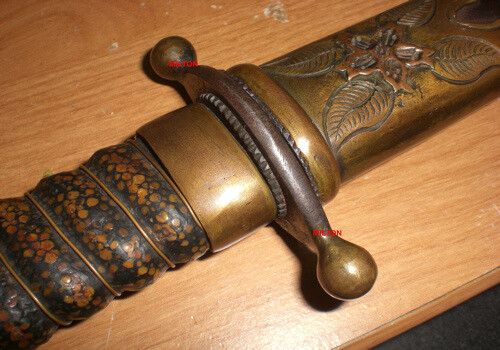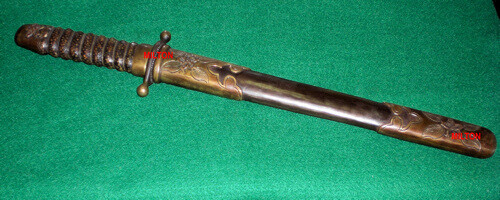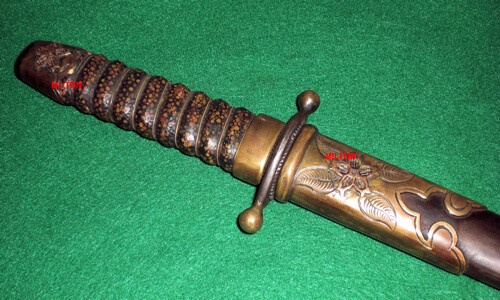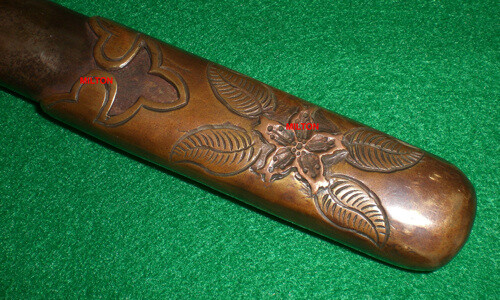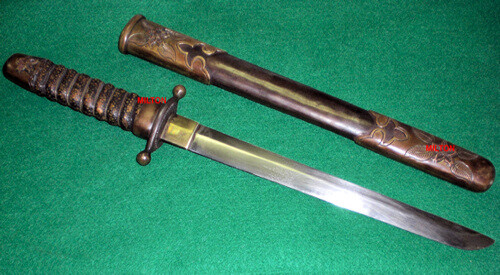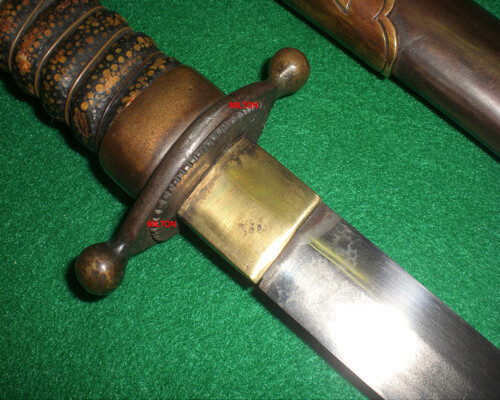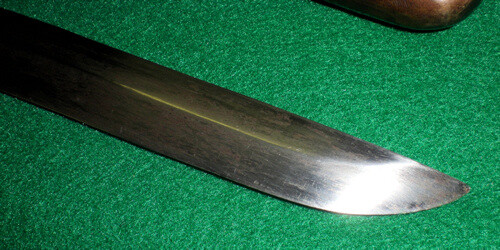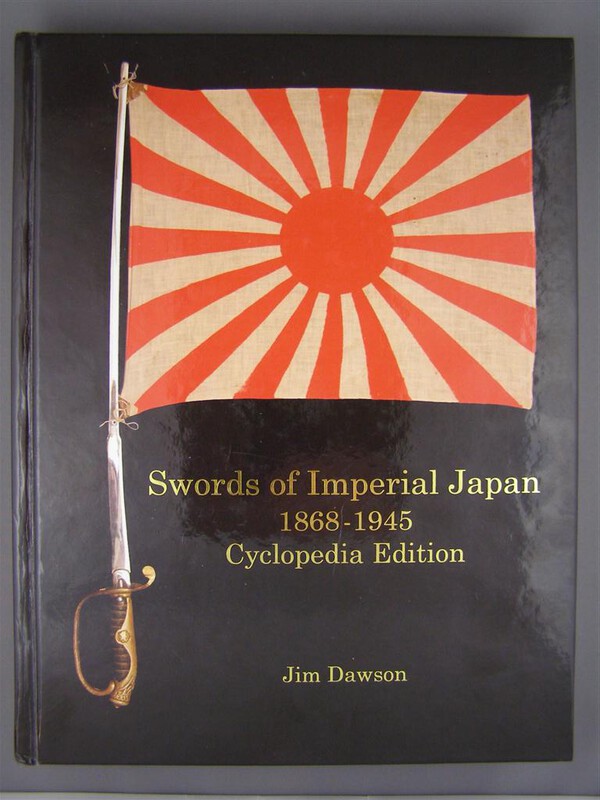
Stu W
Members-
Posts
147 -
Joined
-
Last visited
Stu W's Achievements
-
My thanks to each of you who have taken the time to respond. I appreciate the help. Regards, Stu
-
Hello, I'm requesting someone translate the kanji for me. It's beyond my ability and I don't have my flash cards at hand. Thank you very much. Regards, Stu
-
Request For Translation Of Mei. Please And Thanks.
Stu W replied to Stu W's topic in Translation Assistance
Hello SteveM, Further to your comment about the birth/death dates matching, might those just be the Showa period beginning and end dates? Regards, Stu -
Request For Translation Of Mei. Please And Thanks.
Stu W replied to Stu W's topic in Translation Assistance
Yes, that is what I meant. Thank you very much for clearing that up for me. Regards, Stu -
Request For Translation Of Mei. Please And Thanks.
Stu W replied to Stu W's topic in Translation Assistance
Thanks to each of you who have replied. I appreciate your assistance. I can see that the third and fourth kanji are the same as the Masayoshi ones provided above but am not able to reconcile the 1st,4th and 5th kanji with any of those others you have shown. I understand that a single kanji is not like a single letter in the English alphabet but wonder what the other three mean. Can you assist further? Thanks. Joe, I do not have anything more at the moment but anticipate having the sword in hand in about a week. I'll see what I can provide then. It's currently in gunto mounts but I'm hoping it's more than a non traditionally made Showato. Time will tell. Again, my thanks and regards to you all, Stu -
Good afternoon gentlemen, I've oriented this as best I can with my computer skills. Any assistance will be greatly appreciated. Thank you. Regards, Stu
-
I've been told that it's an alloy referred to as red brass. I do not know the chemical makeup but have noted it in use in several Type 98. If memory serves me it was also the topic of discussion over in the Japanese section of WAF at one time or another. I quite like the look myself. Regards, Stu
-
Hello, Is anyone familiar with the above noted gentleman, his credentials and his work? I am told his work is done under the oversight of a Japanese polisher. Regards, Stu
-
OK, thank you both. That is something constructive I can take back. Much appreciated and in my case something I'll keep a watchful eye on in the future. Regards, Stu
-
Hello Brian, There have been quite a number of this type of thread and I am unable to say if this is the one you refer to. Comments to date on the thread on WAF have been mixed although they started out with "China crap". In addition the number of people commenting is actually very small. The concern of the owner is that such a reply really offers nothing in terms of analysis. Could it be a Chinese reproduction? Certainly, but of what? It could also be a fantasy piece. Compared to the many other repro IJN dirks out there it stands well above their level of quality. Anyway, all info appreciated. I have no financial interest in this piece, just want to see if it might be an authentic piece made for an as yet unknown (to me) agency or organization. Regards, Stu
-
Here are two additional photos. It has been suggested that this is a Chinese reproduction of a Japanese naval dirk. Given the quality of construction and dimensions I doubt that but would very much like to get feedback both so I can learn as well as assist the owner. Regards, Stu
-
Hello All, This dagger has recently been posted on a militaria forum (WAF) for analysis and identification. Opinions vary and range from junk to perhaps an unknown colonial piece. I'll quote the presenter here and then supply the photos. If anyone can ID the piece it would be appreciated. Regards, Stu "I'm trying to identify this short sword, which I believe is Japanese in origin (due to its overall configuration and what appear to be chrysanthemum flowers on the pommel, scabbard throat and drag). The "mum's" are seemingly cast into the heavy brass adornments of both the pommel and scabbard fittings, and then have hand-etched enhancements of leaves, etc. The grip appears to be tortoise shell and is wrapped in a single strand of brass wire. The guard / quillion is a simple affair, ending in two "ball" finials. There is a washer on either side with a sort of "serrated" edge. The blade is peened through the pommel, hence I can not disassemble it to inspect the tang for signatures, etc. The blade itself measures 11 3/4 inches long, and has a very sharp edge. The overall length of the entire piece is 21 inches. The scabbard is unadorned steel with the exception of the throat and drag, which is adorned with the aforementioned brass w/ chrysanthemum motif. I can find NO other markings extant on the piece. From what limited reference material I've got, the closest I've been able to come, due to the style of the fittings, is perhaps something to do w/ "Colonial" type swords?"
-
type 3 Gunto & kai-Gunto identification & commentaries
Stu W replied to rancho's topic in Military Swords of Japan
Hello Daniel, Interesting point you make. I've owned a couple dozen of the Type 3 and handled many more and always found as you say that the versions with two release buttons have been traditionally made swords whereas the single release button types have not. Furthermore the traditionally made examples I have owned have always been star stamped blades although I am aware of others that were not. Regards, Stu -
type 3 Gunto & kai-Gunto identification & commentaries
Stu W replied to rancho's topic in Military Swords of Japan
Hi Eric, Some further information; it's now well documented that Type 3's were used by IJA Officers and had nothing to do with Marines or Naval Landing Forces. That Marines story still survives due to outdated and incorrect information in old reference books and on the Internet. Also, here is a link to the site of Moses Becerra that I find useful as a learning tool. You can scroll through hundreds of sword photos in the Sold archive as well as see current offerings. The photos show characteristics in great detail. http://www.nihontoantiques.com/ Regards, Stu -
type 3 Gunto & kai-Gunto identification & commentaries
Stu W replied to rancho's topic in Military Swords of Japan
Hello Eric, At over 100 USD per inch of blade for a quality polish it's not cost effective to have any WW2 period blade polished unless it's a confirmed gendaito. Yours, in my view, are not. If you wish to learn more about Military swords I suggest Dawson's updated work as shown below. It seems to be the current Gold Standard. If the study of traditionally made blades is of interest then I suggest the second book I've shown. It may also benefit you to read over this section I have quoted from Dr. Richard Stein's outstanding website, The Japanese Sword Guide, which can be found here ... http://www.japaneseswordindex.com/. "The terms gunto, gendaito and showato are commonly used in reference to Japanese swords of the WW II era; but they used in different ways to convey concepts which are not strictly contained in their definitions. LITERAL DEFINITIONS Gunto - "military sword" (this refers to all swords in military mounts, not to whether the blade is handmade or not.) Gendaito - "modern sword" (this refers to the sword having been made between 1876 and 1945, not to whether the blade is handmade or not.) Showato - "Showa era sword" (this term refers to any sword made during the Showa era, 1926 to 1989, not to whether it is handmade or not.) These are the literal rendering of the terms, but to collectors and students of Japanese swords, these terms carry specific connotations sometimes differing from the literal definitions of the terms. In the arena of Japanese sword commerce, these terms are routinely used interchangeably by those not familiar with their specific usage in sword circles. This leads to great confusion and at times unintentional misrepresentation of the sword in question. Any perspective buyer of a Japanese must know how the seller is using these terms or risk being very disappointed with their purchase. NIHONTO COLLECTOR USAGE To Japanese sword collectors the term "gunto" is used to refer to mass produced, mostly machine made or assembly line production, blades of the WW II era. It is a term of derision. "Gunto" are thought of as low class, poorly made swords having no artist value and of interest only as war relics. Even in Japan, this term is used to describe swords of no value. According to current Japanese regulations, "gunto" are not allowed to be imported into the country either for sale or restoration. The term "gendai or gendaito" on the other hand is used by collectors to refer to traditionally made blades; those which have folded steel and are water tempered. The Japanese require that for a sword to be "gendaito" it must be made of tamehagane or oroshigane even though it is impossible to tell what a sword is made from after the sword is finished and polished. Swords made of forge folded commercial mill steel look the same as those made of tamehagane after they are polished although some collectors feel that swords made of tamehagane are more likely to have active hamon and more prominent hada than those made of folded mill steel. "Showato" is used by collectors to also refer to non-traditionally made swords of the Showa Era. It also implies a lower grade of blade not usually of interest to Nihonto collectors. To be a wise purchaser, one must know how to tell the difference between these types of swords regardless of how the seller is using the terms. This is not always an easy task. Two things to look for in distinguishing a true gendaito from a Showato or gunto (using the terms as a collector would) are the presence of visible hada and an active hamon. It must may emphasized that this is NOT an exact science - even advanced collectors will disagree on whether a sword showing these characteristics is truly gendai or not. HINTS ON TELLING THE DIFFERENCE arsenal stamps There are a few "clues" that can be used to help distinguish gendaito from Showato and gunto blades (that is, between traditionally and non-traditionally made blades). Tang stamps are reasonably good indicators of whether a blade is gendai or not. Most of the common arsenal stamped blades, including Showa stamps, Seki stamps and others, are indicative of a non-traditionally made sword blade. There are however a few tang markings which may represent traditionally made swords although this issue is hotly debated. These are the star stamp and the Minatogawa Kikusui mon. Blades bearing these markings are considered by some to be gendaito. Some say that all tang stamps are indicative of non-traditional methods or materials used in the blade production. There are no hard and fast rules. Each blade must be judged on its own merits. The star stamp was used to indicate blades made by smiths of the Rikugun Jumei Tosho (Army approved swordsmiths). Similarly, the Minatogawa mon indicates the blade was made at the Minatogawa Shrine. The Minatogawa Shrine forged traditionally made blades, i.e. gendaito, for the Navy. Minatogawa swords are relatively rare as only a few hundred were made and are avidly sought by collectors as are the Yasukuni Shrine blades. Any blade made at the Yasukuni Shrine forge by a Shrine smith is gendaito. These blades are considered to be among the best quality, traditionally made blades of the WW II era. A list of the swordsmiths working at the Yasukuni Shrine is available in Chris Bowen's Tokyo Kindai Tosho Index. The Yasukuni Shrine forge made blades for the Japanese Army. Swords of the WW II period which have received origami (authentification papers) from the Nihon Bijutsu Token Hozon Kai (NBTHK) or Nihon Token Hozon Kai (NTHK) are also considered gendaito. A partial list of these smiths is also on my website. However, collectors understand that simply because one blade has received origami, does NOT mean that all blades by that smith are gendaito. Smiths not uncommonly made both gendaito and showato during the war. Each blade must be judged on its own merits and not just on the signature of the swordsmith. Swords of the WW II period represent both a low point (Showato and gunto) and a continuation of the tradition of making finely crafted swords (gendaito). This is an area of active research in which new information is forthcoming with great frequency. There is still disagreement between collectors on this issue. Collectors must decide for themselves what they want to study and acquire for their collections. There are no hard and fast rules in the study of WW II period Japanese swords, but hopefully as more information is learned, the job of distinguishing between traditionally made and non-traditionally made blades will become easier." Regards, Stu

